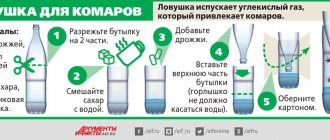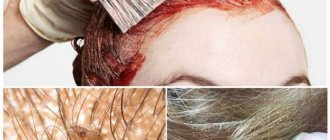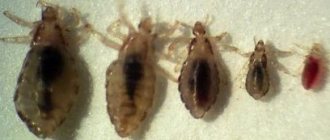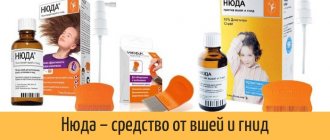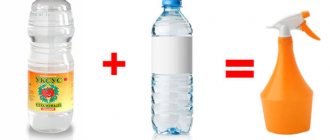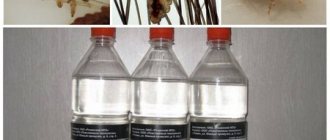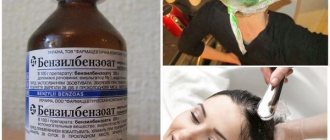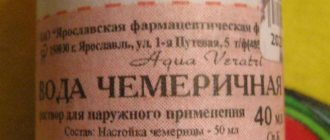Is tea tree oil effective against lice?
Until now, there have been no large clinical trials that could scientifically prove whether tea tree oil is effective against lice. But small studies show that the remedy may be useful in treating head lice. For example, the journal Parasitology Research published evidence that tea tree oil can kill nymphs and adult parasites.
Another study published in BMC Dermatology also showed positive results. Scientists used three different treatments to treat children with head lice. They contained tea tree oil and lavender oil. After the last day of treatment, almost all children treated with tea oil and lavender oil were free of lice. Similar results were seen in children who were treated with a drug that targets the respiratory system of parasites.
In a third study, researchers compared the effectiveness of tea oil, lavender oil, peppermint oil, and DEET (an insecticide). The most effective were tea oil and mint oil. But while the results were promising, scientists agreed that none of the methods were effective enough to be approved for medical use. However, many people continue to use tea oil as a home remedy for head lice.
How to use
Tea tree oil contains some components that have toxic properties. The entry of these substances into the human digestive tract can cause poisoning.
When carrying out procedures aimed at treating head lice, it is important to be careful.
Popular ways to use tea tree oil for lice and nits are: using alcohol tincture, combination with other agents that have antiparasitic properties. You can add a few drops of essential oil to special shampoos for the prevention and treatment of head lice. When choosing the appropriate method, it is important to be guided by the degree of lice infestation.
Recipes
There are significant differences in the methods of using tea tree oil for head lice. With a low level of infestation and a small number of nits and adult parasites, the use of antiparasitic shampoos is sufficient. In case of severe infection, it is recommended to choose a more effective remedy, for example, an alcohol-based tincture.
Alcohol solution
A mixture of tea tree oil and alcohol is highly effective against lice. To prepare the infusion, you need to take fifty grams of alcohol, add 30 drops of oil, and mix thoroughly. Next, pour fifty milliliters of distilled water into the prepared mixture.
The procedure for removing parasites is simple:
- Moisturize hair and skin.
- Using a cloth, cotton wool or cotton pad, apply a small amount of the prepared tea tree tincture to your hair and rub into your skin.
- Wait no more than fifteen minutes.
- Rinse hair thoroughly.
The effectiveness of this product is due to the presence of an alcohol base in its composition. This substance has a detrimental effect on parasites, helping to soften their hard chitinous cover and nit shells.
To remove the latter and remove dead parasites, you need to comb out damp hair using a special comb.
Oil mixture
Other extracts also have antiparasitic properties. To obtain an effective anti-pediculosis mixture, it is recommended to mix forty drops of tea tree oil and ten drops of clove oil. When the mixture has infused a little, you need to begin the procedure.
Apply tea tree extract only to dry hair, rubbing thoroughly with your fingertips. After application, it is recommended to put on a plastic cap, wait fifteen to twenty minutes, and rinse your hair. Upon completion of the procedure, it is important to comb out the parasites with a special comb.
How to use tea tree oil for lice and nits?
Tea oil has antiseptic and healing properties and is included in many skin care cosmetics. It is used for pediculosis in two ways: for prevention and for treatment. For preventive purposes, oil can be used in the following cases:
- • you heard about an outbreak of head lice in a school, kindergarten or camp;
- • one of your family members is infested with lice, and you don't want to infect the others.
Full treatment should be carried out only if you find live lice or nits.
Some conclusions
- Any method of using tea tree against lice does not guarantee the destruction of even living adult insects. The young individual develops in the safe shell of the nit.
- All recipes require multiple daily hair treatments. And they end with the phrase “until full recovery.”
- Tea tree oil for lice and nits is not used in pediatric practice. In allergy sufferers and people with status asthmaticus, it can cause bronchospasms and airway obstruction.
Each mother decides independently how and how to treat herself and her child. In official medicine, there are a number of medicines in the form of sprays with proven effectiveness made from natural ingredients that are used at home. Some of them are allowed for children from 1 month.
Is it better to use a proven product with proven effectiveness? Don’t play folk medicine by infecting others with head lice!
Tea tree oil for lice: recipes
To get rid of lice, you can use the following recipes:
Recipe with mayonnaise
The combination may seem strange, but it is a fairly effective recipe.
Take two tablespoons of mayonnaise and six drops of tea oil. Mix the ingredients thoroughly and apply them to your scalp. Leave the mixture for at least an hour, then wash off with a mild shampoo. To achieve better results, repeat the procedure a couple of times a week until the parasites completely disappear. Recipe with vodka
Mix five drops of tea oil and three tablespoons of vodka.
Take a cotton pad and use it to apply the mixture to your scalp and hair. The product can be left overnight. Repeat the procedure every 5-7 days until the lice and nits disappear. Recipe with lavender oil
Mix four drops of lavender and six drops of tea oil.
Lavender relieves itching and improves sleep quality. Leave the mixture on your hair overnight. Repeat the procedure until completely cured. Recipe with olive oil
Olive oil goes well with tea oil.
This nourishing mixture will help make your hair smooth and silky. The oils have anti-inflammatory and antioxidant properties, helping to reduce itching and soothe an irritated scalp. Mix six drops of tea and two tablespoons of olive oil. Apply the mixture to your scalp and distribute it evenly throughout your hair. Repeat treatment after a week Tea Oil Spray
If you need a mild lice treatment, such as for a small child, use a spray. To do this, pour 50 mg of water into a spray bottle and add 8 drops of tea oil to it. Shake the can well before treating your hair. Leave the spray on your hair for at least half an hour, then rinse thoroughly. This procedure must be repeated at least three times a week.
Essential oils as an effective method of getting rid of lice
The situation can be easily corrected without a haircut. Using essential oils for lice, you will quickly forget about head lice and at the same time make your hair healthier and give it shine. Check your aromatic medicine cabinet for essential oils: · lavender, · rosemary, · tea tree, · juniper, · lemon, · geranium. If the set is not complete, don’t despair, four from the list will be enough. Coconut oil is indispensable as a base. It prevents the breathing of nits (lice larvae). Vegetable oil has a viscous consistency. It envelops the parasite, which, after some time, loses the ability to breathe and dies. Nits suffer. They are attached to the hair due to an adhesive composition that dilutes the greasy product. Therefore, the capsule is easy to comb out. Recipe
- 10-15 ml coconut
- 1 tbsp lavender
- 1 tbsp lemon
- 1 tsp rosemary
- 1 tea tree.
Mix, let stand for a day or at least several hours. Wet your hair well, rub it into the scalp, cover with a special hair cap, and leave the mixture overnight. In the morning, wash off with shampoo. Then comb your hair with a fine comb dipped in heated 9% vinegar. This effective folk method destroys the chitinous membranes that attach the nit to the hair. Therefore, they are easier to remove with your hands and a comb. Do this for several days in a row. After this, take lavender, geranium, rosemary, juniper in equal proportions. Apply 1 drop of pure essential mixture without diluting in the base on your hair, avoiding the skin, in the neck, temples, crown area, or rub 2-3 drops in your palms and distribute through your hair. In the morning, wash your hair with shampoo, adding 3 drops of the same mixture to a portion. Also repeat for several days. Next, be sure to repeat the aroma mask weekly over the next three weeks and comb with a comb with heated vinegar. Then you will get results and get rid of parasites.
Basic methods of treating lice
There are three main methods of combating head lice. Let's look at each of them:
- • Mechanical. This method involves mechanically removing adult lice and nits using a fine-tooth comb. To completely get rid of parasites, you need to stock up on time and patience, because the combing procedure must be carried out every day. You can make combing easier by using a hair conditioner with a couple of drops of tea tree oil. This method is called “wet combing”.
- • Physical. Modern drugs for lice are based on physical effects on parasites. These medications contain viscous substances that clog the respiratory system of lice. Deprived of oxygen, the parasites die. Remedies based on physical effects are generally safe and can be used to treat children and pregnant women. An additional plus is that they can be used repeatedly, as lice do not become resistant to them.
- • Chemical. There is a wide range of anti-pediculosis drugs, the mechanism of action of which is a chemical effect on lice. Most often we are talking about oppression of the nervous system of insects. Preparations based on insecticides must be used with caution when treating children. In addition, they may not always be sufficiently effective, since lice develop resistance (become resistant) to certain chemicals.
Alternative folk remedies against lice and nits
People know many other remedies that help cope with head lice.
Alcohol
Alcohol cannot be applied to hair in its pure form , but there are many recipes based on it. After applying alcohol infusions, you need to warm your head and wait half an hour. The effect is explained by the antiseptic effect of alcohol, due to which it helps destroy adult parasites, but does not affect nits. Its use is contraindicated for children.
Tar soap
Tar or laundry soap helps fight parasites due to its antiseptic effect and specific odor. They just need to soap their hair and keep it under plastic for 2-3 hours. Then the product is washed off and the hair is combed out.
Vinegar
Vinegar helps fight both lice and nits. But it can cause a burn, so it must be diluted. Apple cider vinegar is diluted with water in a 1:1 ratio, 9% table cider vinegar is diluted in a 1:2 ratio .
Attention! Vinegar products are usually recommended to be applied only to the hair, avoiding the scalp.
Then you need to put on a special cap and insulate your head with a scarf or towel. After half an hour, you need to wash and comb your hair.
Cranberry
Cranberry juice helps fight nits, which many other remedies do not work on. It corrodes the egg shell and destroys the parasite embryo. The product must be used for 10-15 days . During this time, adult individuals die of natural causes, and new clutches of nits will be destroyed.
The recipe uses natural honey. Pass a few handfuls of cranberries through a blender or juicer, strain and remove the pulp. A couple of tablespoons of honey dissolve in the resulting juice. The composition can be used for a night mask under polyethylene.
One of the best folk remedies for fighting head lice is tea tree oil. Being inexpensive, accessible and easy to use, it helps eliminate an unpleasant disease. But it is important to use it correctly, taking into account all precautions.
Watch an interesting video that talks about alternative folk remedies for the treatment of head lice.
- about the author
- VK profile
Preventing lice infestation
Unfortunately, there is no way that can protect you from head lice 100%. But there are certain prevention methods that will help reduce the risk of infection. First, explain to your child that there is no need to avoid close head-to-head contact with other children. If a girl has long hair, it is better to braid it in a tight braid. This will to some extent make it more difficult for lice to find a new host. You can apply a couple of drops of tea tree oil to your hair; parasites do not like its smell. In addition, observe the following rules:
- • Periodically comb your hair thoroughly after shampooing with a fine-tooth comb. If lice are found, begin treatment immediately.
- • If one family member has lice, check the rest immediately
- • If your child becomes infected with lice, report it to the kindergarten or school. This will allow teachers to respond to the situation in a timely manner and your child to avoid re-infection.
- • Use preventive medications, for example, Paranit Repellent, which contains substances that repel parasites. The effect lasts for 24 hours and is safe for humans.
Safety and side effects
Despite the ancient traditions of using tea tree oil in the fight against lice, the results of modern research not only do not confirm the effectiveness of this remedy, but also indicate a large number of contraindications to its use.
Thus, if tea tree oil enters the digestive tract, it can cause vomiting, diarrhea, hallucinations, headaches and stomach pain. When treating the skin with oil, a serious allergic reaction and simple irritation can develop, which is especially typical for children.
Review
“We also used tea tree oil for lice. It doesn’t give any special effect, but both my skin and my child’s skin became rough and flaky after this, and my daughter even had allergies. Compared to him, even the same Nyuda, who directly mows down lice, is generally harmless.”
Ekaterina, Tula
It is not surprising that in the United States and some Western European countries, tea tree oil is not recommended for medicinal purposes due to insufficient knowledge of its effect on the skin and the side effects it causes.
It is also useful to read: Nyx Lice Remedy
And one more thing: Lice are not cockroaches, so is it worth removing them with Dichlorvos? (the article has more)
We get rid of lice quickly, safely and without unnecessary problems
“Paranit” is a line of pediculicidal products. It contains dimethicone and mineral oil. Both ingredients are actively used in the cosmetic and pharmaceutical industries. For example, dimethicone is added to shampoos and conditioners to moisturize and soften hair. Mineral oils are included in creams and lotions for face and body care.
How do these components help fight lice? Lice breathe through tiny holes located on the sides of their bodies called spiracles. Through these same holes they release excess moisture. "Paranite" has a double effect. Dimethicone and mineral oil clog the parasites' respiratory openings, simultaneously depriving them of oxygen and disrupting their water balance. This leads to the rapid death of insects.
Since “Paranit” belongs to the class of low-hazard compounds, it can be used to treat small children (from 1 year old) and pregnant women. Due to the fact that it physically affects lice, insects do not develop resistance to treatment. Therefore, the pediculicidal effectiveness of “Paranit” will be maintained even with repeated use.
Precautionary measures
Essential oil is safe if used carefully. The components that make up the melaleuca extract are toxic. When using the product, observe the following precautions:
- The essential substance has an expiration date, after which its use may cause health problems.
- It is forbidden to take the drug internally - there is a high risk of food poisoning, and in large doses - blood intoxication.
- Treat the affected skin and hair carefully, trying not to get it on the mucous membranes or in the eyes. If the product does get in, you should quickly wash it off with warm running water and soap.
- When using tea tree oil for lice for prevention purposes, make sure that there is no allergy. If there is hyperemia or itching, you should stop using the product.
If these simple rules are followed, the extract is safe to use.
Recipes
Here are some useful recipes for lice using tea tree oil:
- To prepare an alcohol solution you will need 50 g of ethyl alcohol and 30 drops of tea tree oil. They need to be thoroughly mixed together, and then diluted with 50 g of distilled water and mixed again. Treat the hair and scalp with the resulting medicinal mixture, performing intense rubbing movements. Particular attention should be paid to the vertex, temporal and parotid areas.
- A combination of two types of essential oils – tea tree and clove – will help achieve double the results in the fight against pediculosis. They need to be mixed together in a ratio of 20 to 4 drops. It is recommended to rub the prepared product intensively into the scalp every day, always complementing the procedure with a session of combing the hair with a thick comb. The course of treatment is individual - the procedure must be repeated until not a single parasite remains on the hair.

